Sancerre, Not Just a Pretty Wine: A Photo Tour
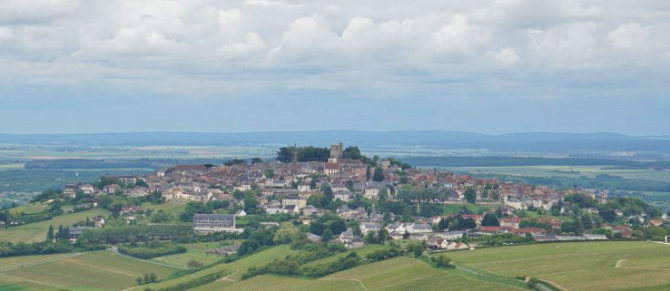

If the name “Sancerre” springs forth visions of crisp white wine, dripping with minerality and dancing on your taste buds, then you are in for a treat. This luscious wine from Sauvignon Blanc grapes is indeed solely produced in the French wine appellation d’origine contrôlée (AOC) called Sancerre. But Sancerre is not just a pretty wine or the appellation’s name; it is also the name of a fairytale hilltop town surrounded by kilometers of verdant vines and fields alongside the serpentine Loire river.
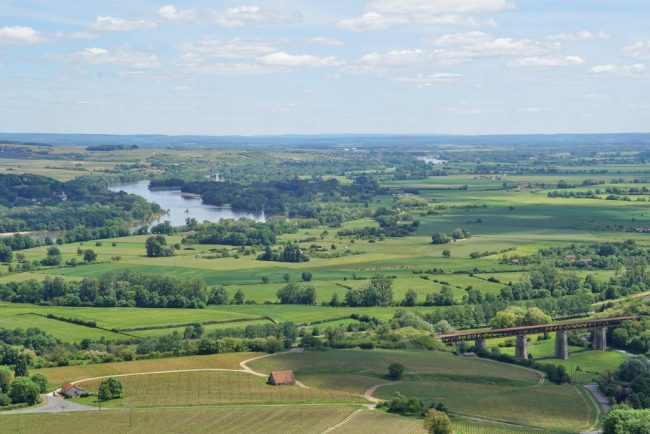
The Loire river and valley. Photo: Dawn Dailey
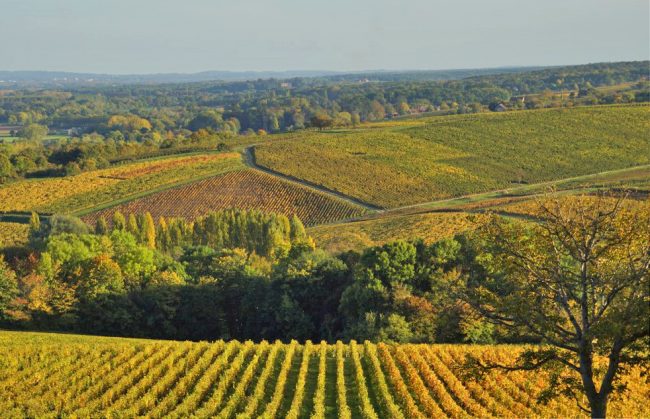
Vineyards in autumn. Photo: Dawn Dailey
Located just two hours south of Paris along the eastern edge of the Loire Valley, the town of Sancerre is close enough to attract a smattering of Parisian day-trippers. But it is also a historic and picturesque base of operations for exploring this gorgeous land over more than just one day.
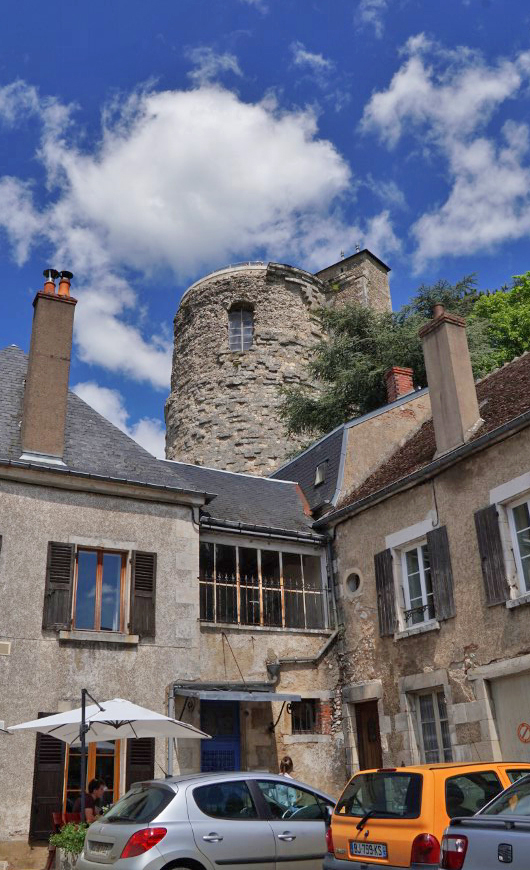
La Tour des Fiefs in Sancerre. Photo: Dawn Dailey
Sancerre’s colourful history spans centuries. In the 1300s, the Counts of Champagne built a fortified wall, complete with towers, to protect the city. Today, the tower called La Tour des Fiefs, constructed in 1390, still stands. Climb the sixteen flights of wooden steps to the top for a magnificent view of Sancerre and the surrounding valley. On a clear day, you can see for kilometers and know without a shadow of doubt why the Loire Valley is known as the “Jardin de France”.
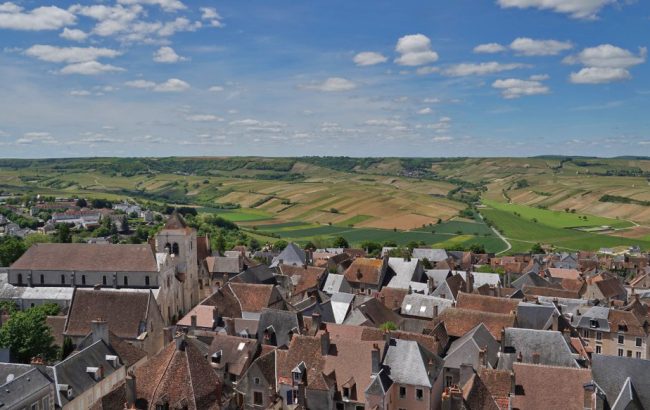
View from the top of La Tour des Fiefs in Sancerre. Photo: Dawn Dailey
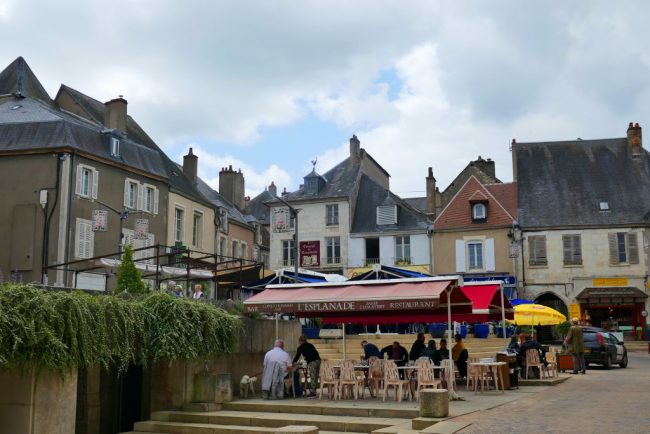
Nouvelle Place, the central square in Sancerre. Photo: Dawn Dailey
Attacked twice over the course of the Hundred Years’ War (1337-1453), the fortified city of Sancerre survived, but also saw battles in later wars. The Huguenots lived and fought here during the Wars of Religion in the battle known as the Siege of Sancerre (1572-1573), and the town also saw action in the French Revolution; later, during World War II, it housed a regional command center for the French Resistance.
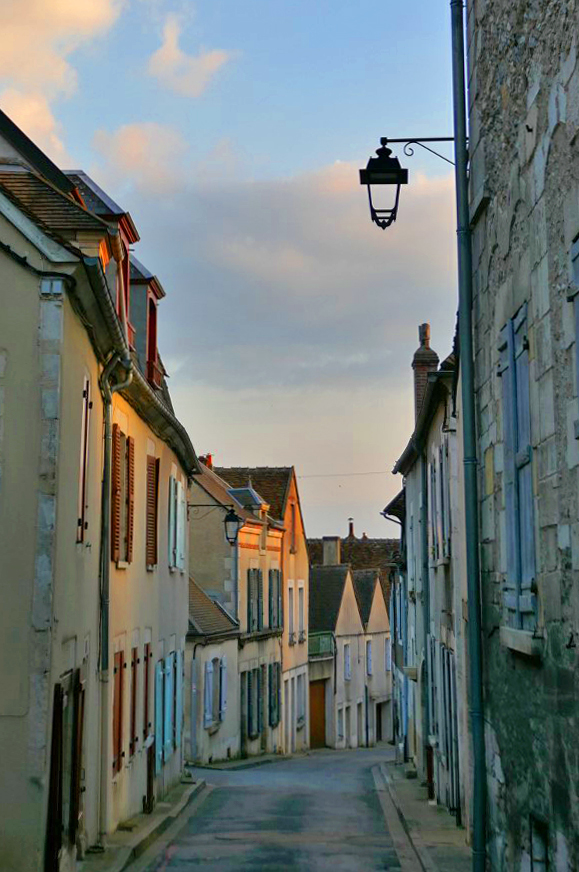
Dusk among historic homes in Sancerre. Photo: Dawn Dailey
Sancerre is indeed a survivor with many medieval buildings remaining today. One such historic home is that of Jacques Cœur, a merchant who gained notoriety in the 15th century as the richest man in France. King Charles VII appointed him to the post of Treasurer, and through Cœur’s successful negotiations, trade between France and the rest of the world flourished. His personal motto was “A vaillans cuers riens impossible.” (“To a valiant heart, nothing is impossible.”) Little did he know just how true that would be for him personally. For a while, he was the darling of the wealthy class, often loaning money to his peers until they became so envious of him and his property that they falsely accused him of poisoning the king’s mistress and of various other crimes. He was stripped of his wealth and sent to prison.
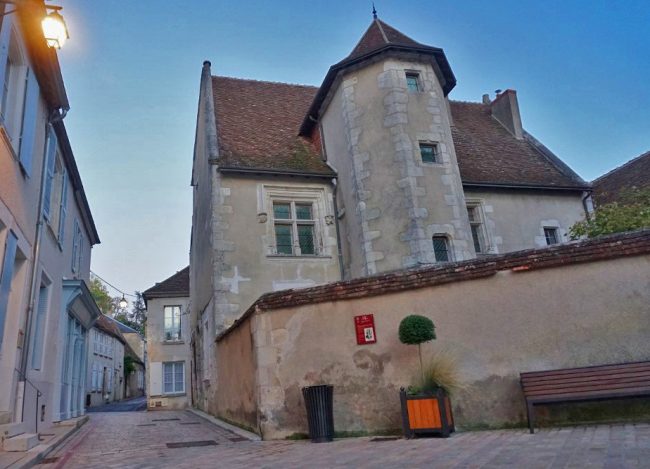
The 15th century Jacques Cœur house in Sancerre. Photo: Dawn Dailey
With the help of friends, he escaped to Provence and then to Rome where he was reinstated to position by the Italian King Nicholas V. He had survived disgrace and then restoration, and perhaps he discovered that indeed nothing is impossible with a valiant heart. After his death, King Charles VII restored what remained of Cœur’s wealth to his sons. While his home in Sancerre is not open to the public, the palace he built in Bourges (a 45-minute drive away) welcomes visitors to the splendors, the hardships, and the ultimate restoration of Jacques Cœur and his life so many centuries ago.
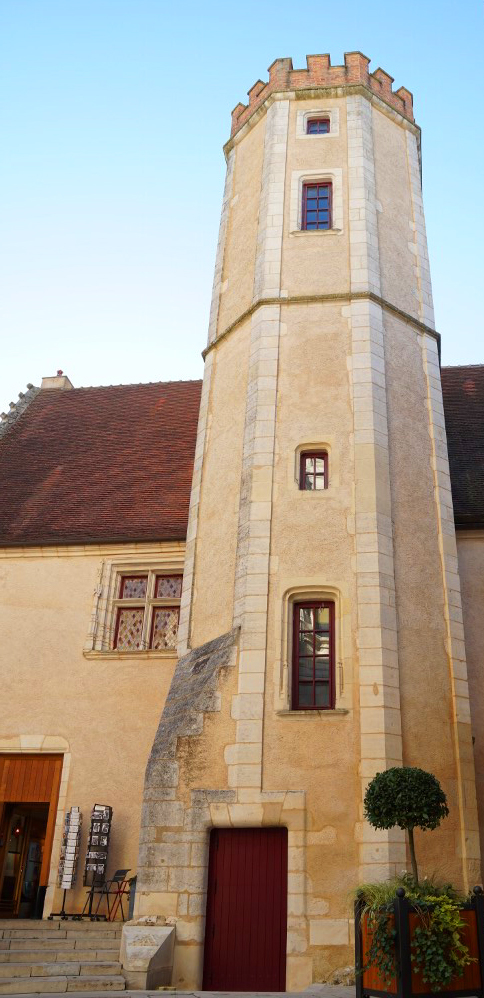
La Maison des Sancerre. Photo: Dawn Dailey
Just down the street from the Jacques Cœur house in Sancerre is la Maison des Sancerre, an interactive and educational visitors center all about Sancerre wine, the local winemakers, and neighbouring vineyards. It’s housed in a charming 15th century building complete with its own tower. The 8-euro admission fee covers access to the exhibits via a self-guided tour plus a glass of Sancerre served at the end of the visit in the amazing gift shop. Wander out to the lovely garden, sip the wine, and enjoy the incredible view of the valley.
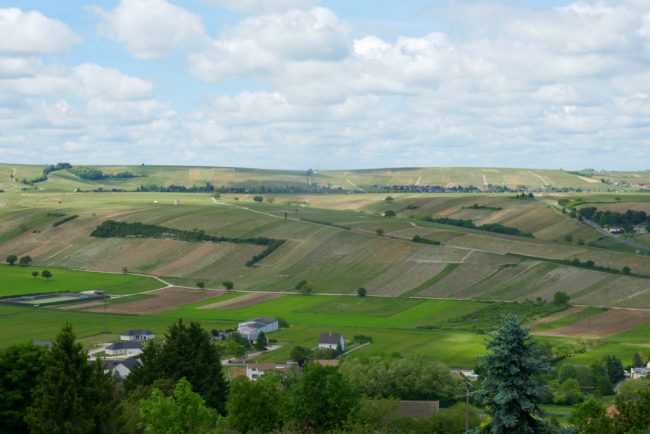
View from Maison des Sancerre. Photo: Dawn Dailey
Today the maze of cobblestoned streets transports visitors back in time across the centuries. It’s difficult to get lost here amidst the ancient buildings and homes, some with colourful doors and window boxes. Many streets lead to the open square where restaurant tables spill out onto the center. When the weather is nice, locals and tourists alike take a break to enjoy une tasse de café or un verre de vin. A walk around the perimeter of town affords beautiful views of lush vineyards and undulating fields stretching out as far as the eye can see.
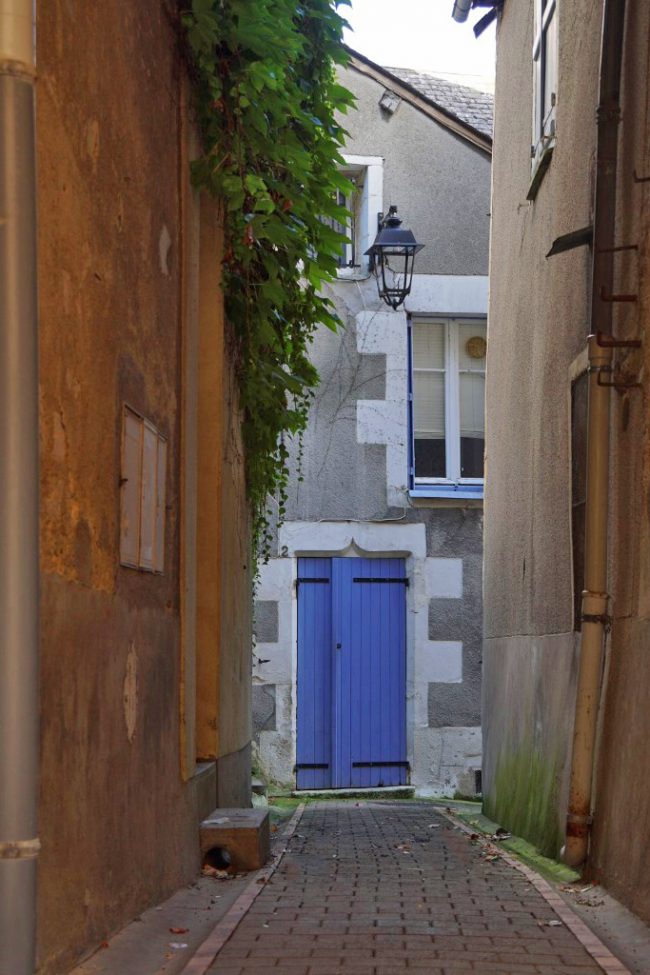
A welcoming door in Sancerre. Photo: Dawn Dailey
For such a small town, Sancerre has numerous restaurants. Seven are listed in the Michelin restaurant guide with one earning a “Bib Gourmand” award in 2019. Variety is found in the various establishments that range from pub-like to haute cuisine.
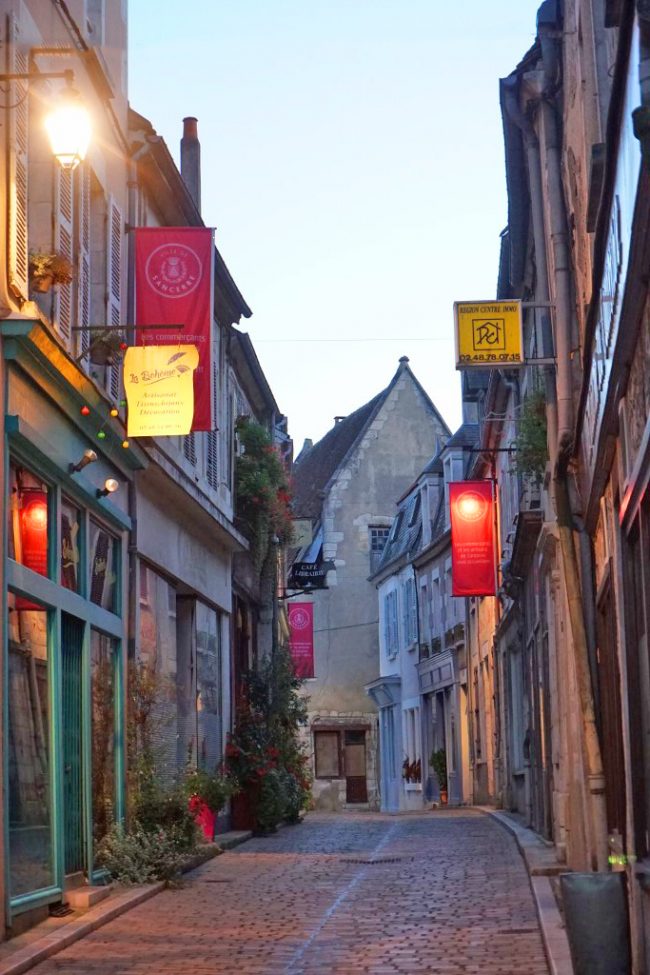
Shops along a cobblestoned street in Sancerre. Photo: Dawn Dailey
A visit to Sancerre is not complete without stopping by the town’s fromagerie. Inside this tiny shop is an ample selection of the local goat cheese specialty known as Crottin de Chavignol. Famous for being the best type of goat cheese made in the Loire Valley, production of this cylindrical cheese from the neighbouring town of Chavignol dates back to the 16th century. These delicious small rounds of creamy goat cheese pair perfectly with a glass of Sancerre. Add a baguette from one of the two boulangeries, and some local sweeter-than-sweet fraises, and you have a lunch fit for a king, or maybe his treasurer. I’m sure Jacques Cœur would approve.
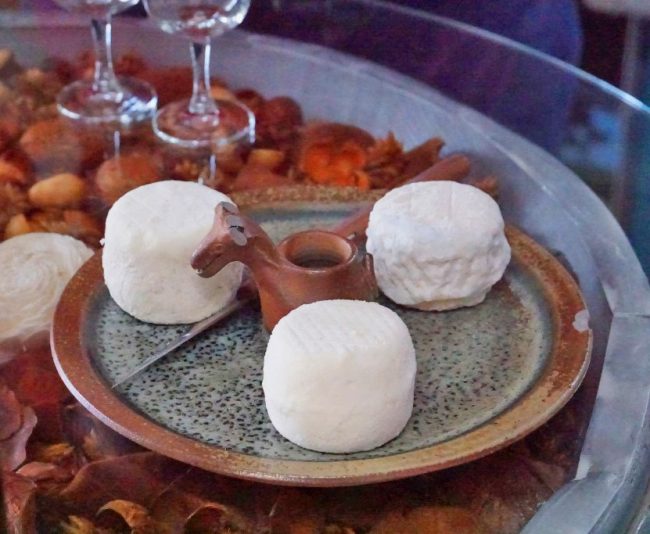
Crottin de Chavignol. Photo: Dawn Dailey
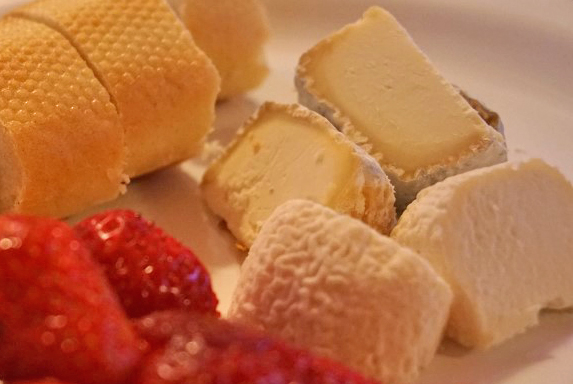
A simple but delicious lunch. Photo: Dawn Dailey
When you’ve satisfied your appetite, check out the Château de Sancerre. Built over Roman ruins in 1874, this Louis XII-styled mansion was purchased in 1919 by Louis-Alexandre Marnier-Lapostolle, most famously known as the maker of the orange-flavoured liqueur Grand Marnier. While the Grand Marnier division of the company was sold recently to the Campari Group, the Château makes excellent wine and is open to visitors for tastings. For those who venture outside the Hexagon for wine tastings, their opulent sister winery is located in Chile under the name Lapostolle.
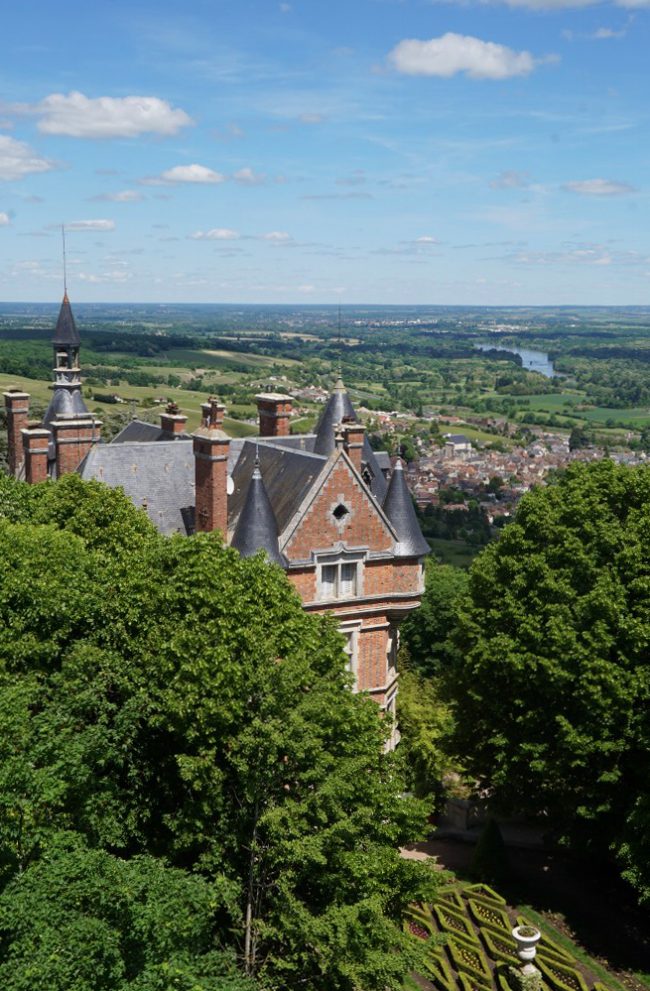
Château de Sancerre from La Tour des Fiefs. Photo: Dawn Dailey
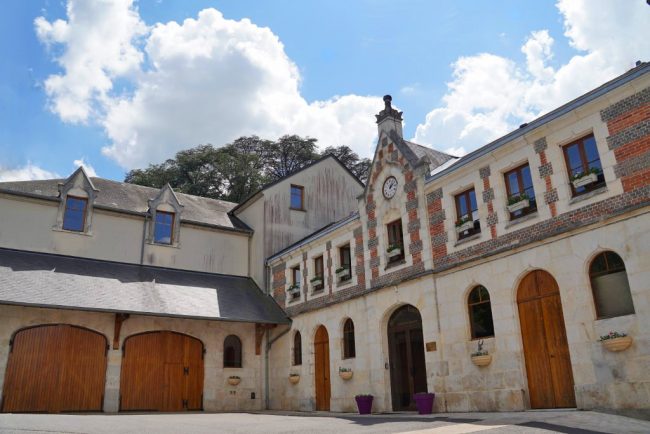
Château de Sancerre. Photo: Dawn Dailey
Sancerre is home to numerous shops, many of which are wine shops and tasting rooms, serving up Sancerre wine from grapes grown in the various soils found here in the vineyards, from the chalky limestone-laden terroir (“calcaire” or “caillottes”) to soil embedded with flint (“silex”) to clay mixed with limestone (“terre blanche” or “argilo”), all imparting their own unique minerality to the wine. For red wine lovers, Pinot Noir is produced here and also goes by the name Sancerre. There are several hundred small wineries in the Sancerre AOC. Many of the vineyards line the roads just outside of town. Local wine tours are available if you’d prefer not to drive. Just outside of town, surrounded by vineyards, is a bridge purportedly designed by Gustave Eiffel. While the Tower and the Statue of Liberty are his most famous ironworks, Eiffel engineered numerous iron bridges and other structures located around the world.
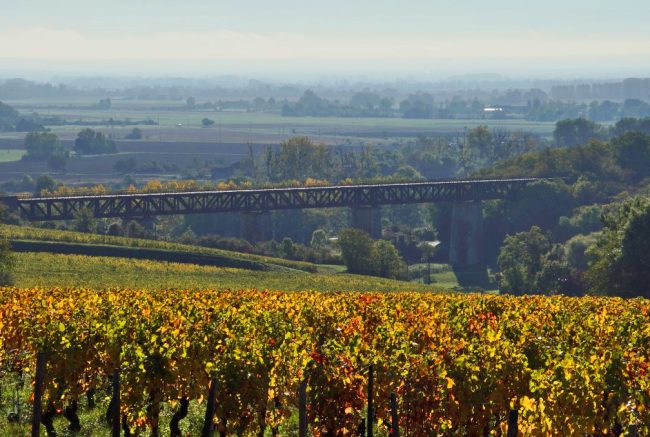
Vineyards surrounding an Eiffel bridge near Sancerre. Photo: Dawn Dailey
One of the town’s larger businesses is a French immersion language school called Coeur de France. Located in a beautiful, renovated 16th century château, the school provides group classes as well as private tutoring on a weekly basis. Stay for a couple of weeks in one of the school’s apartments and brush up on your French while soaking in the beauty of the local culture and the peaceful surroundings.
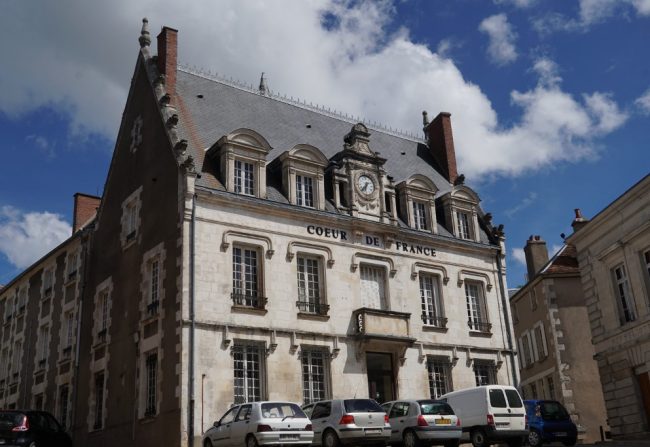
The entrance to Coeur de France, a renowned language school in Sancerre. Photo: Dawn Dailey
Whether you come here to taste the luscious wine, to explore this medieval hilltop village, or to improve your French, you will come away with a sense of serenity, of life at a slower pace, and you will have seen for yourself that Sancerre is more than just a pretty wine.
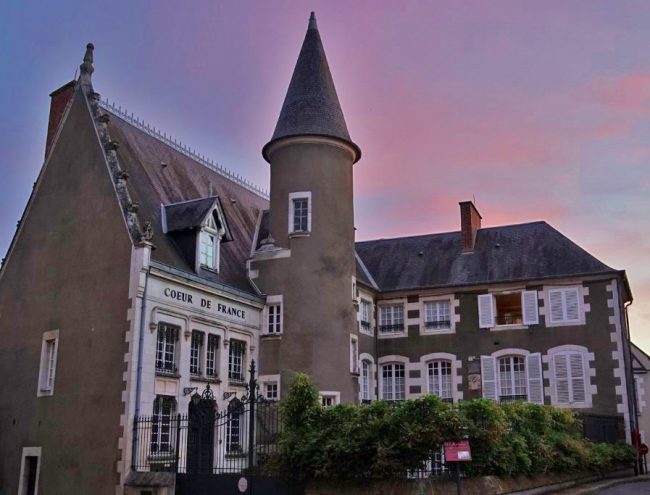
The 16th century château that houses Coeur de France in Sancerre. Photo: Dawn Dailey
GETTING THERE: From Paris, take the train from the Paris-Bercy station to Cosne-sur-Loire, and taxi from there to Sancerre. Alternatively, drive the two hours south from Paris and park your car for free around town. To plan your trip, visit the office tourist office website. After you arrive, stop by the Office de Tourisme located at Esplanade Porte César for info on local sites and events. While in the area, check out the nearby Château de Pesselières as well as the towns of Chavignol, La Charité-sur-Loire, and Bourges.
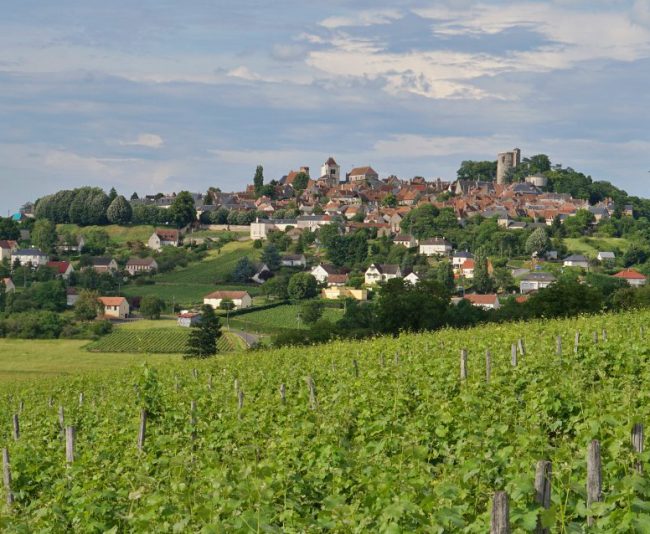
Sancerre from the vineyards. Photo: Dawn Dailey
Share to: Facebook Twitter LinkedIn Email
By Dawn Dailey
Leave a reply
Your email address will not be published. Required fields are marked *




REPLY
REPLY
REPLY
REPLY